Recent Articles
Popular Makes
Body Types
2020 McLaren GT Road Test and Review
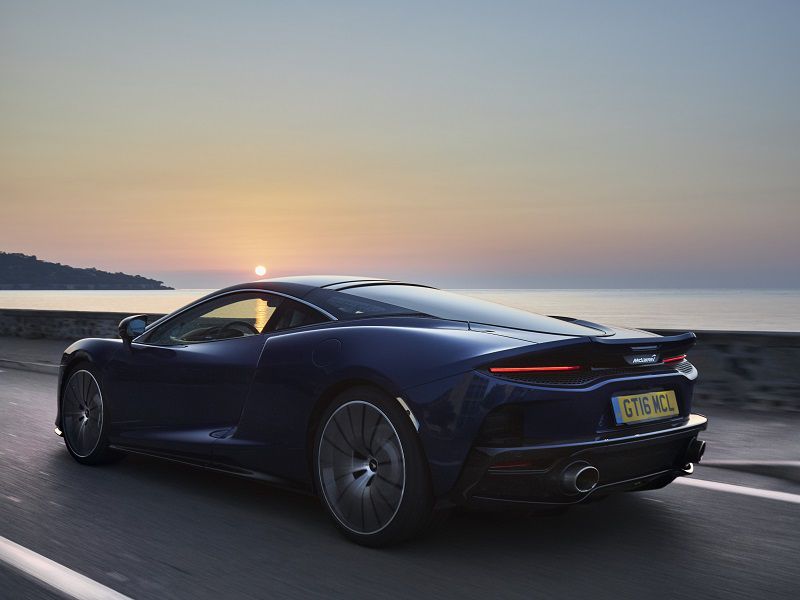
2020 McLaren GT Blue Rear Three Quarter Driving Sunset ・ Photo by McLaren
There’s a wonderful documentary on Netflix about the life and times of Bruce McLaren. From his childhood in New Zealand, to his successful racing career, to the winning racecars he created, the film covers it all — including his untimely death at age 32 in 1970. Before you buy a 2020 McLaren GT or any McLaren supercar, take the time to watch it.
In 1963, McLaren founded the car company that bears his name in the United Kingdom, where it remains. Today, McLaren Automotive creates some of the world’s greatest sports cars from its state-of-the-art McLaren Technology Centre in Woking, Surrey, not far from London. It’s probably best known for the F1, a supercar it created in 1992. Some still say it’s the best car ever made. For the last 10 years, the automaker has been building a full line of powerful mid-engine two-seaters. Its latest, the McLaren GT, is its most refined and luxurious ever, a fast and exclusive supercar that comfortable enough to drive every day. It competes with a handful of other mid-engine supercars such as the Ferrari 488, Lamborghini Huracan Evo, Acura NSX, and Audi R8.
Rapid and Refined
With a base price of $212,500, including a $2,500 transportation fee, the 2020 McLaren GT is one of the company's most affordable models. Only the 570S costs less. Unlike most of the brand’s other models, the GT is only available as a two-seat coupe, no convertible. It does use the same exotic carbon-fiber tub construction as the rest of the automaker's lineup, however, and its engine and transmission come from its parts bin. The GT’s turbocharged 4.0-liter V8, which revs happily past 8,000 rpm, also powers the McLaren 720S. And every McLaren gets the same quick-shifting seven-speed dual-clutch automatic.
But the McLaren GT is a very specific model created for buyers that want more comfort and refinement with their speed. Unlike the 600LT, which is basically a race car for the street, the GT is as much about daily civility as supercar performance. It’s even the only McLaren with enough trunk space for a small surfboard or a set of skis.

Photo by McLaren
No All-Wheel Drive
Although it’s designed to be driven every day, the McLaren GT is not available with all-wheel drive. This is the norm at McLaren. The automaker has never offered all-wheel drive on any of its models. Meanwhile, the technology is standard on most of its rivals, including the Lamborghini Huracan Evo, Audi R8, Acura NSX, and Porsche 911 Turbo S.
Rear-wheel drive saves weight and gives the GT a more lively chassis that can be enjoyed and exploited by highly skilled drivers, but for the rest of us, it makes the supercar much more difficult to drive quickly — especially in wet or slippery conditions. Standard equipment includes a wide set of Pirelli PZero performance tires on a beautiful set of aluminum wheels and a nose lift system that allows you to raise its front end to better clear driveways and speed bumps. Our test car was also equipped with a long list of extra-cost options, including massive carbon-ceramic brakes. Its final price climbed to over $253,000.
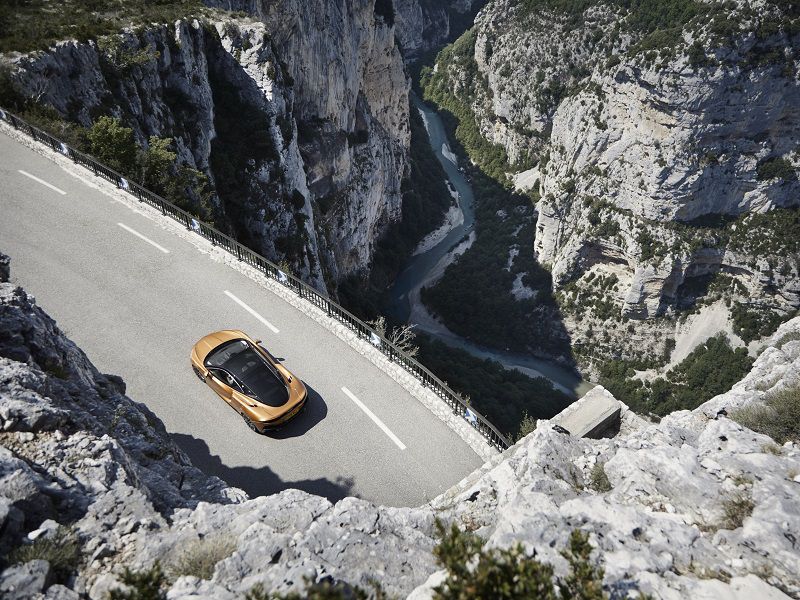
Photo by McLaren
True Supercar Acceleration
The McLaren GT is one of the company's most powerful models. Its twin-turbocharged 4.0-liter engine produces 612 horsepower at 7,500 rpm, and 465 lb-ft of torque. It’s also the brand’s heaviest sports car. The GT weighs nearly 3,500 lbs, due to its leather-lined interior, additional sound insulation, and heavier aluminum body, which was chosen over carbon fiber to keep its price down.
But don’t worry, it can still out-accelerate nearly every other car on the road. The GT not only reaches 60 mph in less than three seconds, but it covers the quarter-mile in less than 11 seconds. Although that’s better than the Acura NSX, the Lamborghini Huracan Evo and new 911 Turbo S are a bit quicker thanks to the additional traction provided by their all-wheel drive systems. McLaren has also given the GT a full-length exhaust system so it doesn’t wake the neighbors. Its turbocharged V8 can be heard, but it doesn’t rattle windows.
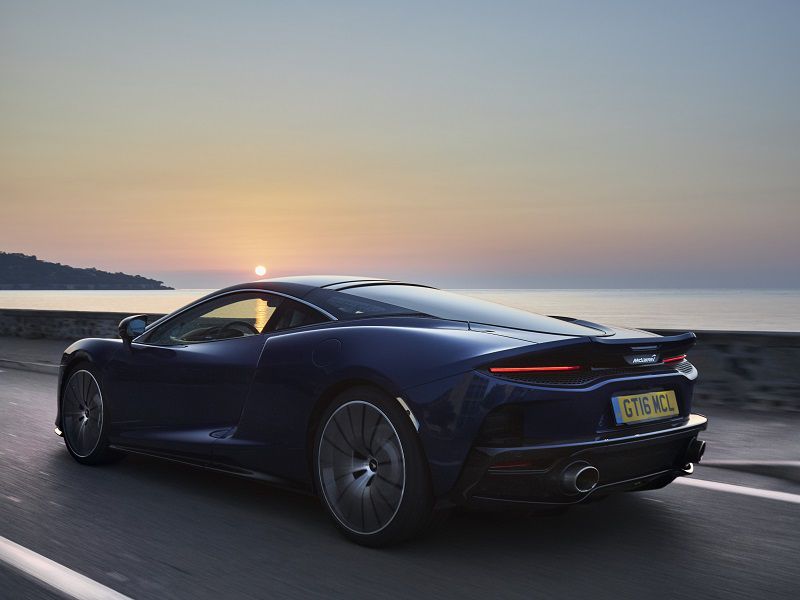
Photo by McLaren
Real Supercar Handling
Like McLaren’s ultimate track toy, the 600LT, the GT uses a conventional double-wishbone coilover suspension, which has been retuned for an improved ride. You still feel connected to the asphalt, but only the largest potholes send a shutter. The company’s more technologically advanced hydropneumatic suspension setup, which uses hydraulics, has the ability to ride even better. But that system adds considerable cost, so it isn’t used on this model.
Its suspension is tuned for road trips more than the race track, but the GT still keeps a Kung Fu grip on the road. Reactions are immediate, and the GT is as fast on a smooth mountain road as any other McLaren — carving its way through corners with a touch of body roll that helps keep you informed of its traction limits. It isn’t darty or skittish or scary, but there’s so much corning force available, it’s difficult to find the GT’s handling limits on a public road. To reach the required speed, you’re either a Formula One superstar or you’ll have to put your survival instinct on hold.
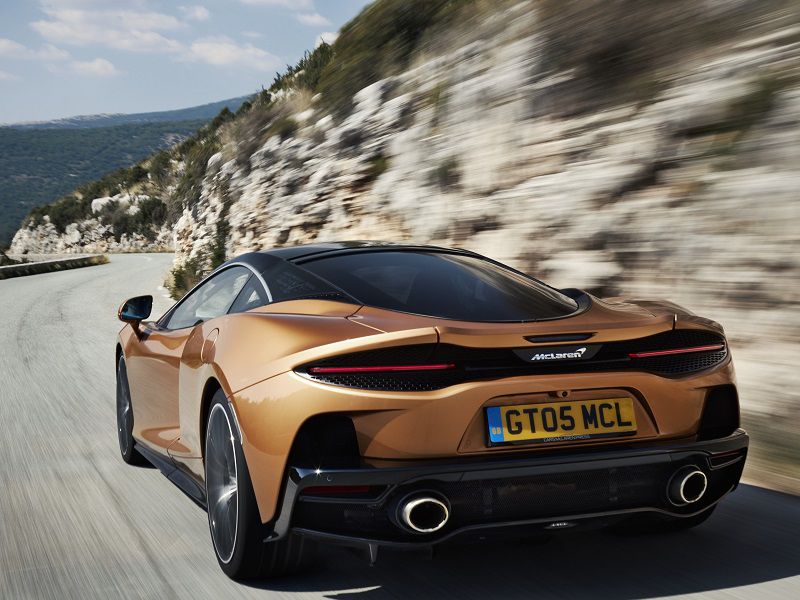
Photo by McLaren
Steering Feel For Days
All McLarens steer with a mechanical purity long forgotten by most automakers. Your hands feel hardwired to the GT’s front tires, their hold on the road communicated clearly and precisely. This is called steering feel. It gives you the confidence to go faster, to enter corners with a greater commitment and make precise adjustments when they’re needed.
Unfortunately, we can’t say the same thing about its brakes. Although there’s plenty of stopping power, and they resist heat incredibly well, there’s just no feel. The McLaren’s brake pedal is dead-numb and requires too much leg effort. This is a trait of all McLarens. You can get used to it, but you shouldn’t have to.
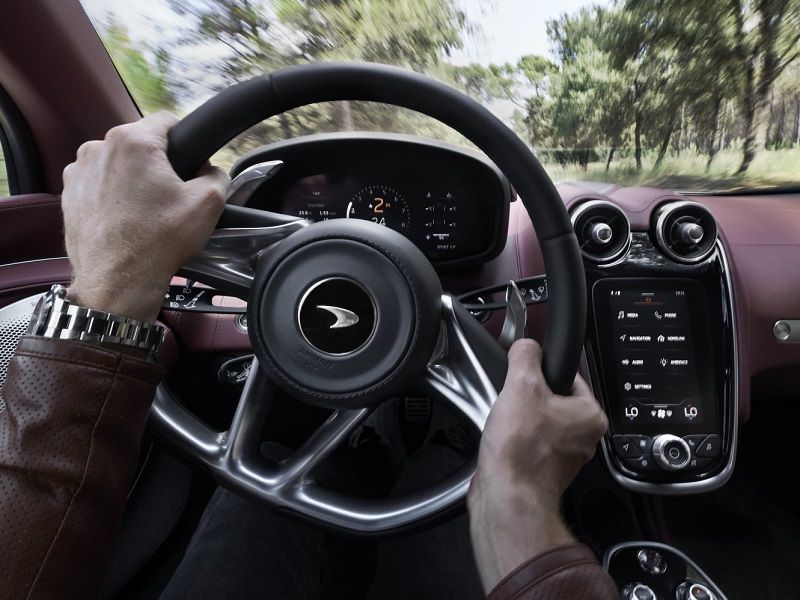
Photo by McLaren
Adjustable Dynamics and Decent Fuel Economy
McLaren does allow you to adjust the GT’s dynamics with knobs and buttons on its console. There are four settings for the suspension and another four for the response of its throttle and transmission. In the most relaxed settings, the GT is quite mellow, offering an unexpected and welcome calm for the drive to work or a run across two states. The engine is quiet and its transmission changes gears smoothly. In the other settings, the GT cranks up its intensity, but it never feels raw or too much like a racecar.
Fuel economy doesn’t really matter much in a car like this, but the GT does feature a start/stop system that shuts off its engine at idle to safe fuel. And its fuel economy is pretty good for this class. Its EPA ratings are 15 mpg in the city and 21 mpg on the highway. We averaged 18.7 mpg over 300 miles of mixed driving.
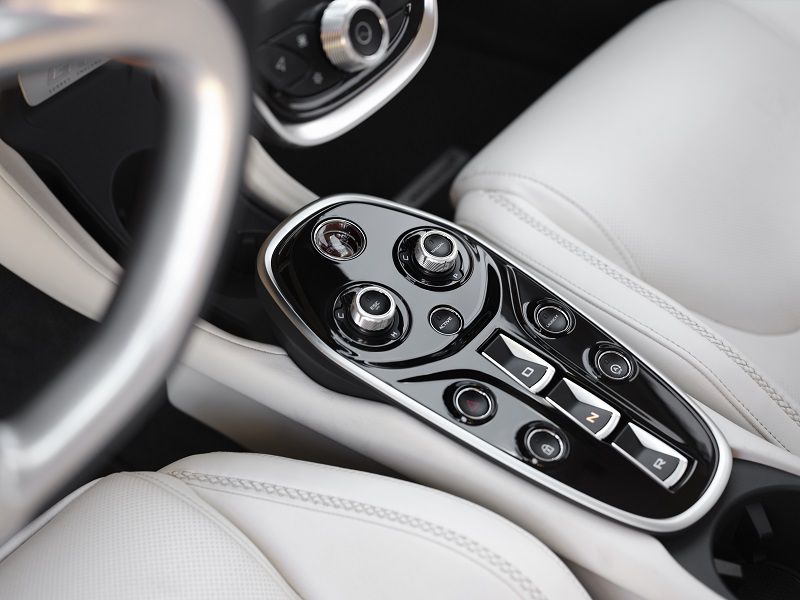
Photo by McLaren
Comfortable, Clean Interior
McLaren doesn’t equip the GT with an array of electronic safety systems that do the driving for you. Despite its price, the supercar is without radar cruise control. Its interior, however, is well suited for long drives. Just plan on stopping every 200 miles to stretch your legs and rest your ears, as the supercar’s footwells are quite small and there’s plenty of road roar from its large tires.
Its interior is well-crafted. Its build quality is exceptional, and the materials used are right for a car at this lofty price point. Its seats are comfortable, but some more padding would be nice. They’re adjustable for height, so it’s easy to find the right driving position. The dash is simple and clean with few buttons. Its uncomplicated instruments are digital and the infotainment touch screen in the center of the dash is large enough. Unfortunately, the system isn’t as easy to use as it should be.
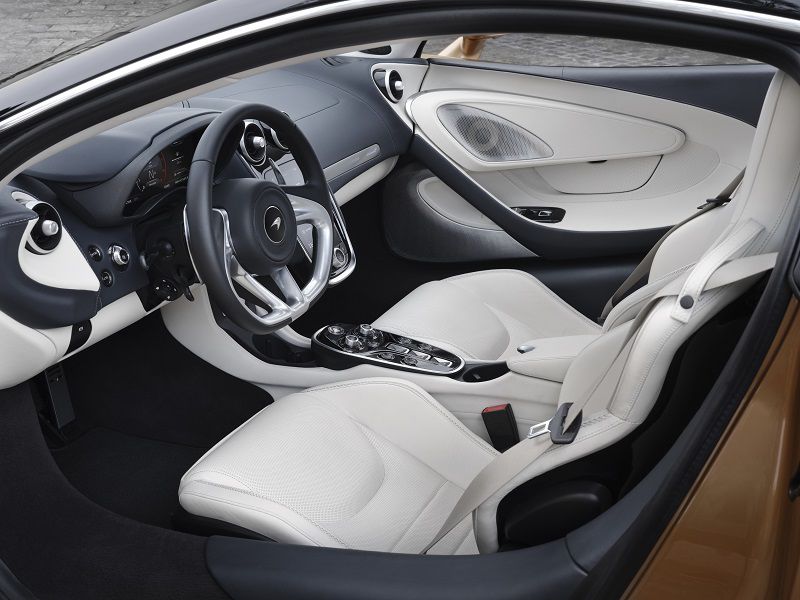
Photo by McLaren
Does it look like a Corvette?
Like most McLarens, the GT looks longer in photos than it really is, but it is wide. In fact, it’s over 5 inches wider than a Mercedes S-Class, so it can be difficult to squeeze down tight city streets. At only 47.8 inches tall, it’s also easily not seen by distracted moms in full-size SUVs.
The GT does turn heads, but more than one admirer confused it for the new 2020 Chevy Corvette, which is also mid-engine two-door and has similar proportions. The two sports cars also bear a striking resemblance to one another from the front. The McLaren’s doors are a distinctive crowd-pleaser, though. They open up and out, sort of like the wings of a butterfly. It’s quite dramatic, but they can be an issue in tight parking lots. It’s also hard to look cool climbing in and out of the supercar. It isn’t easy. Maybe we need to work on our core.
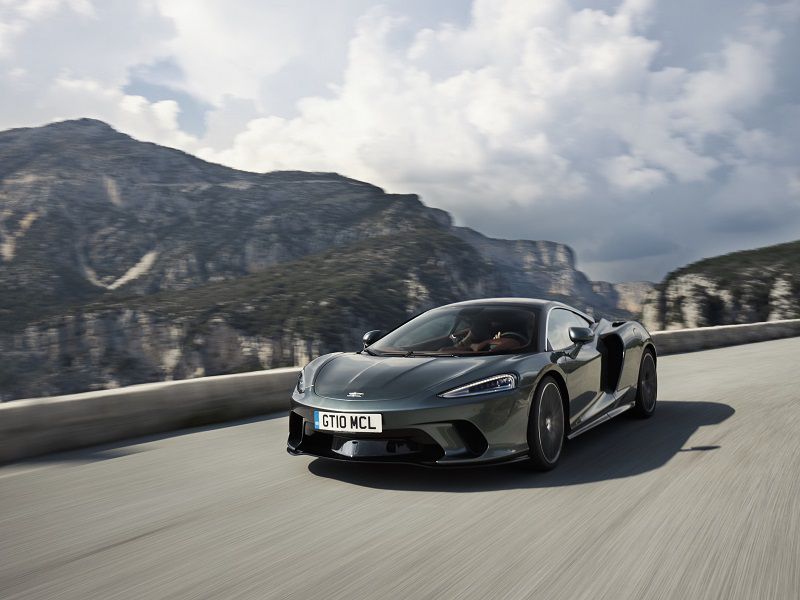
Photo by McLaren
Final Thoughts
Something unique happened while we were testing the McLaren GT, the more we drove it, the more we liked it. This usually isn’t the case with supercars. Normally the thrill lasts for a few days, and then the adrenaline wears off and the honeymoon is over. That’s when you realize there isn’t much to love beyond the rush.
But the GT is like no other McLaren. It’s a real car. It isn’t just a supercar, with extreme speed and succulent good looks. It also packs enough civility to be enjoyed every single day. That’s not an easy trick to pull off, which is why the number of mid-engine sports cars offering that kind of mechanical schizophrenia is short. If you’re shopping for a supercar that’s as kind and refined as it is fast, the 2020 McLaren GT is hard to beat.
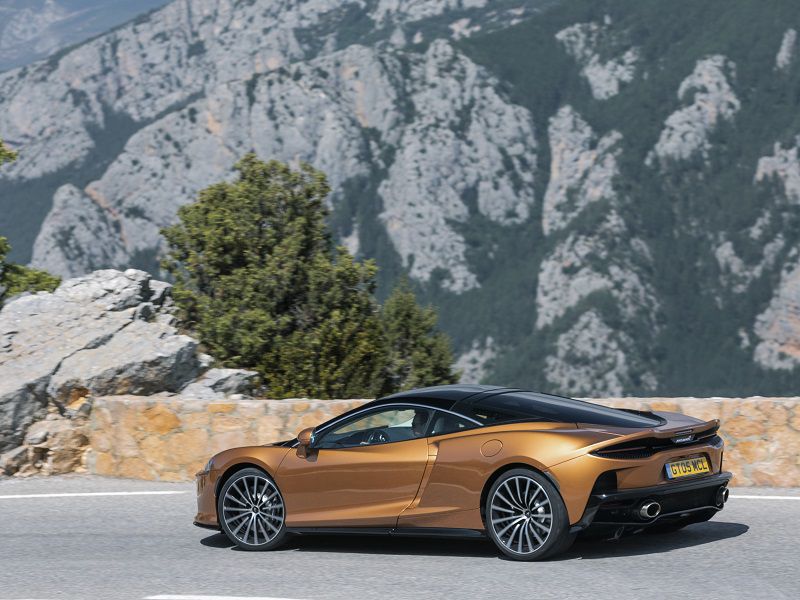
Photo by McLaren